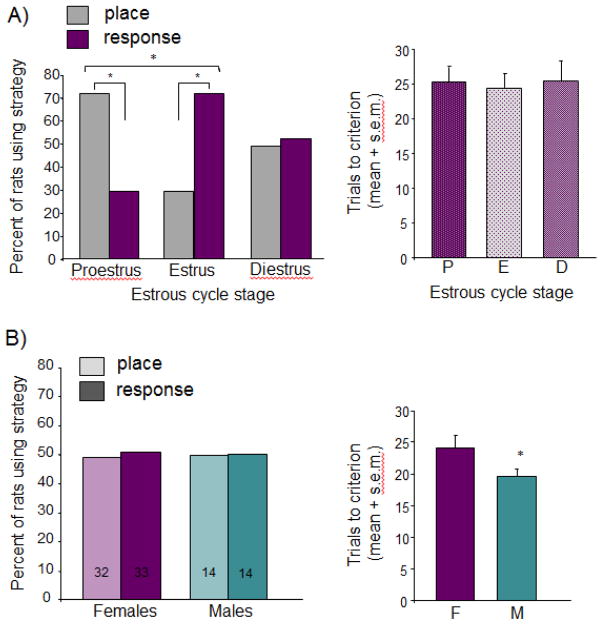FIGURE 2.
Learning strategy selection in the dual solution task. A) Effects of estrous cycle on strategy selection. Left graph depicts percent of rats using place and response strategies; right graph shows learning speed using the number of trials to reach criterion. Note a substantial bias within stage and shift between stages in the proportion of rats using place and response strategies without any evidence of cycle effects on learning speed. B) Comparisons across age-matched males and females without regard to estrous status. When data from females are collapsed across cycle stage there are no strategy biases or sex differences in strategy use (left panel) or learning speed (right panel). Adapted from [74, 75]. * = p < 0.05.

